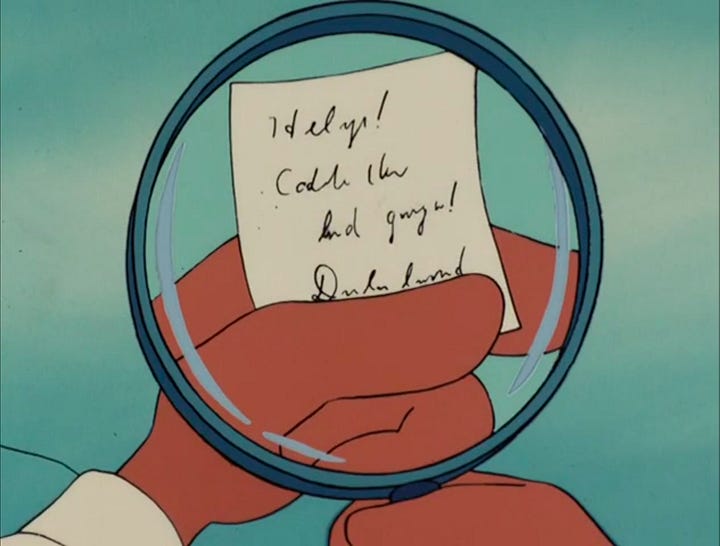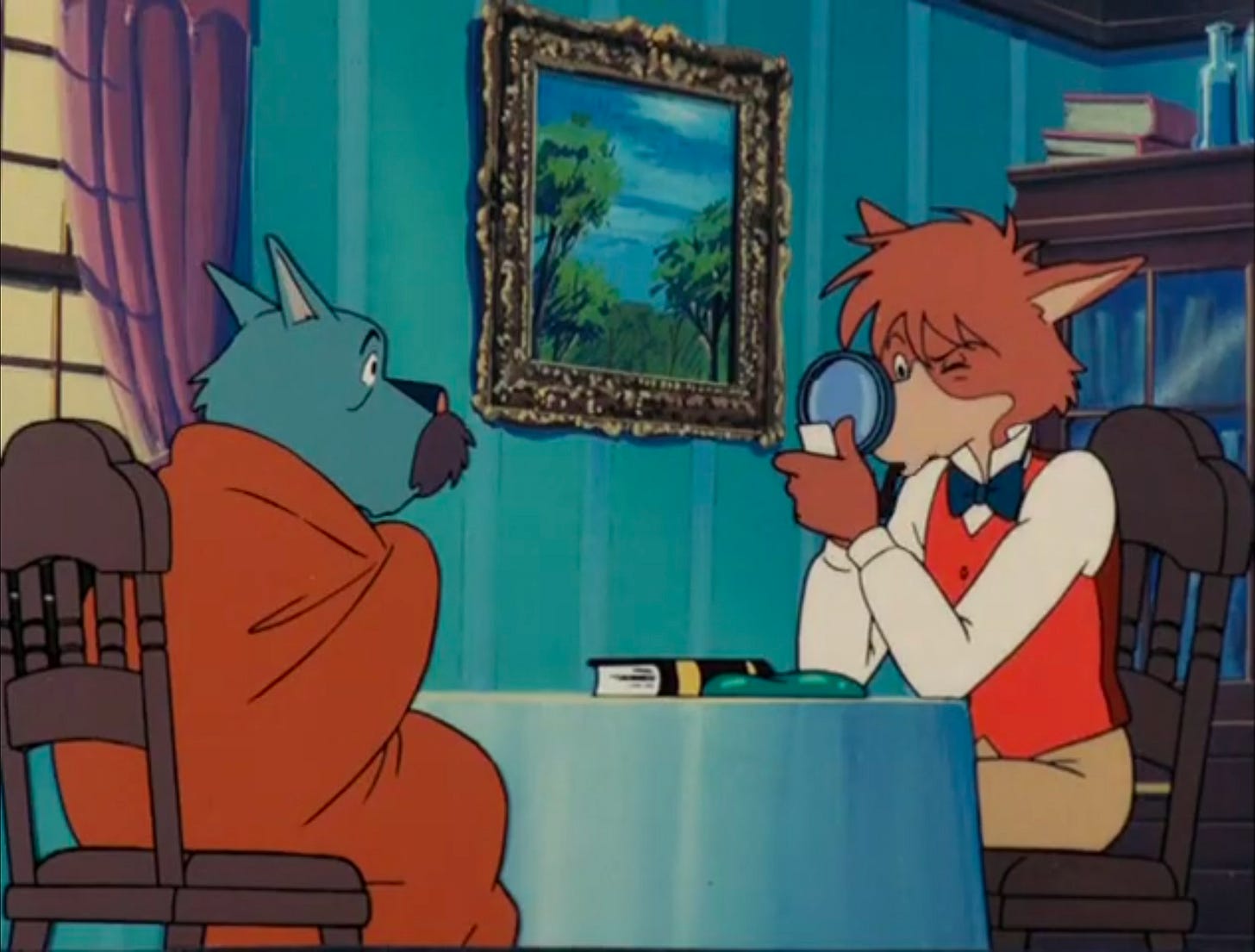Five of our favourite shots from “The Green Balloon”, an episode of 1984 Italian / Japanese animated series Sherlock Hound.
Magnifying Both Ways
As Holmes looks through his iconic magnifying glass, we get a view of what he’s reading, before a delightful reverse shot shows his magnified eye and signature pipe.


Establishing Shot
The dreamy, smudge-y sunset look of this establishing shot is different than much of the episode, and indeed much of the series.
The difference in look and feel can potentially be explained by work from multiple directors (for more on that see the final shot). But the style shift works because this island is specifically a remote location meant to look and feel different to the smoggy cobblestone streets Holmes and Watson often trod.
Speaking of style standouts!
Bright Lights, Stark Outlines
“The Green Balloon”’s plot involves a lighthouse and a makeshift floating lighthouse (Moriary’s plots are always hilariously convoluted); so the animation uses the blindingly bright lights as reason to draw several characters in black-and-white outline form.
On the Lighthouse
The animators selectively use small colour accents to draw the eye to key elements, such as the kid’s eyes.





On the Water
Note how things in shadow give shape to the tableaus, and Moriarty’s goons are still in full colour because they’re far back enough in the shadows to be outside the bright glare of the lights.



Looping Delight
Being 1. animated 2. in an aeroplane enables a whole series of delightful gags.
Said visual gags include wonky angles, Watson ‘popping up’ from behind Holmes “so long, farewell“ style, Watson snagging his hat out of the air, and finally Sherlock capturing a ballon by loop-de-looping his open-cockpit aeroplane onto it.
Angles! Lens Flare! Zooms!
This short scene directs our eyeballs a few different fun ways, many of which are considered ‘live action’ techniques — not because they’re solely produceable in that medium, but they do require a little extra time and finesse to draw, and also call really distinct attention to themselves.
Let the Eyes Lead the Cut
Cutting on a blink or on eyes looking at something specific is a common live-action technique, but works quite well in animation, too!
Holmes and Watson come walking along, pause, and look up; the cut follows right after we see the whites of their eyes shift.
Motion and Angles
Their eyes looking up leads not just to the cut, but into the camera making an upward, tilting motion.
The scene keeps all the motion moving Left-to-Right until the end; Holmes and Watson walk that way, then look that way, and the balloon travels that way. Everything moves the same direction, until they ‘hit a wall’ metaphorically, and turn around to leave.


Holmes and Watson are shown looking up, then from a high angle; meanwhile the goon is shown from their general POV, a low angle.
This keeps the characters’ respective positions — and who has the ‘high ground’ ie knowledge of what’s going on — in the back of our minds even when they’re not sharing the frame.


Lens Flare
The pan+tilt-up element is a ‘camera move’ more common to live action, and the lens flare much more so, if only because there it can happen naturally and even incidentally.
In animation each of these techniques requires extra work and time to create a kind of stylisation you are not likely to be able to reuse, and combining them doubles down.
Indeed, we don’t see another shot of the back of Holmes and Watson, though the lens flare effect stays in every shot of the goon, it changes a bit with the zoom, so making even more work.
Zoom
As another ballon floats by — left to right — in the sky behind the goon, there’s a rapid zoom which mimics how Holmes notices it, and also because the sudden action makes sure the viewer will recognise something important is happening.
Parting Shot
Many Studio Ghibli regulars worked on Sherlock Hound, as Hayao Miyazaki championed the show and is credited as a director on this episode.
While the series re-numbering and credit process make murky who directed all or part of many episodes, Kyôsuke Mikuriya and Sumio Tokoro are also credited here; it seems likely it was a collaborative effort.




